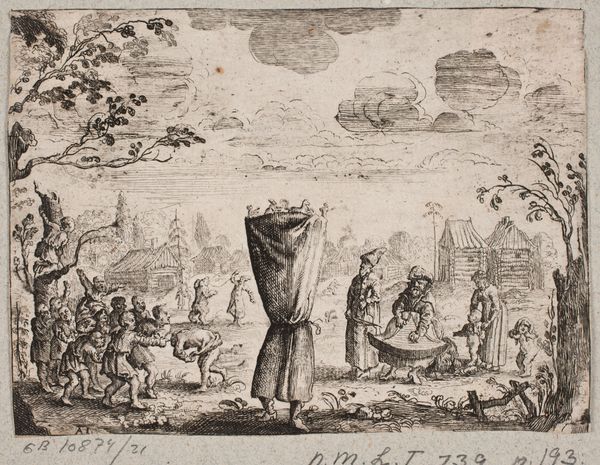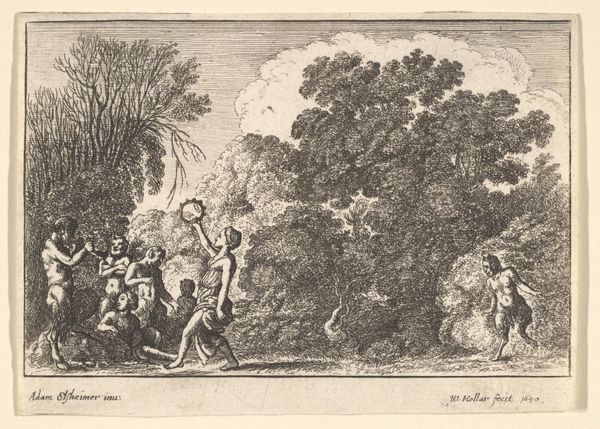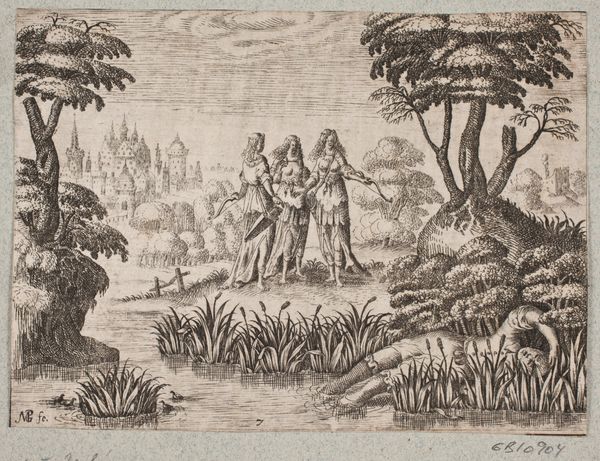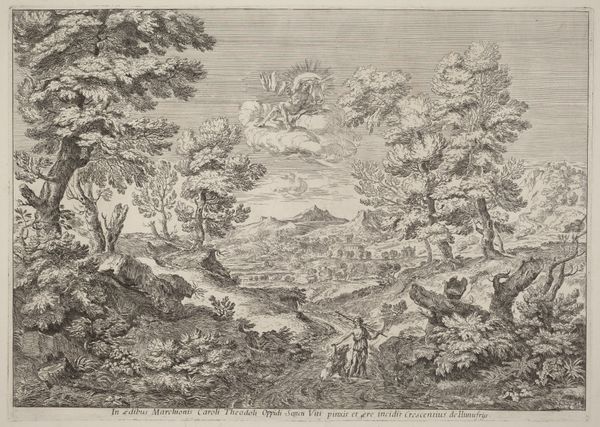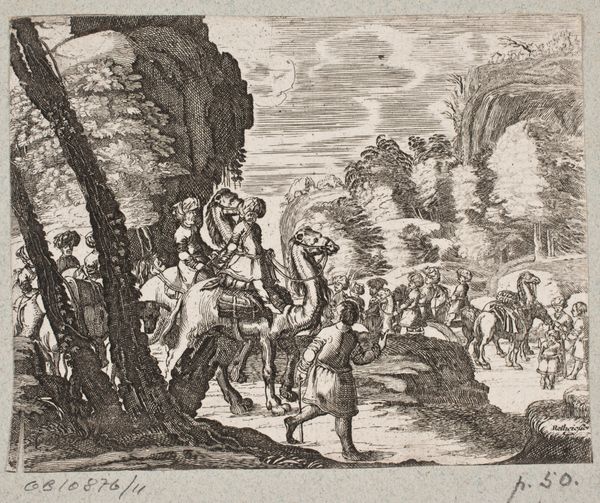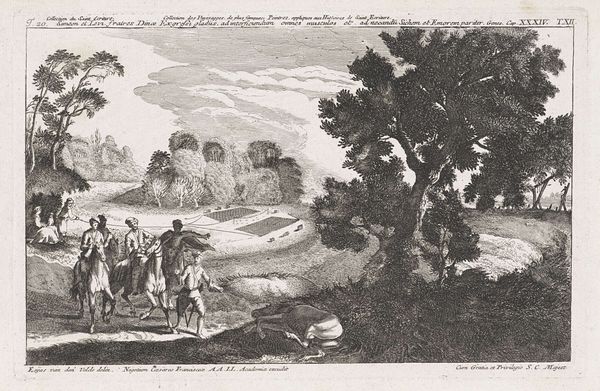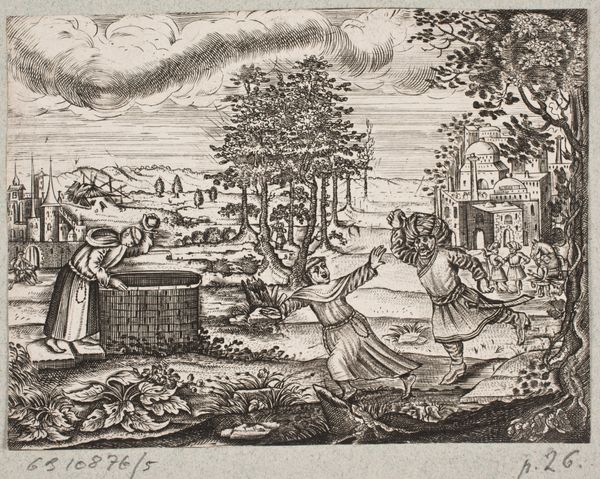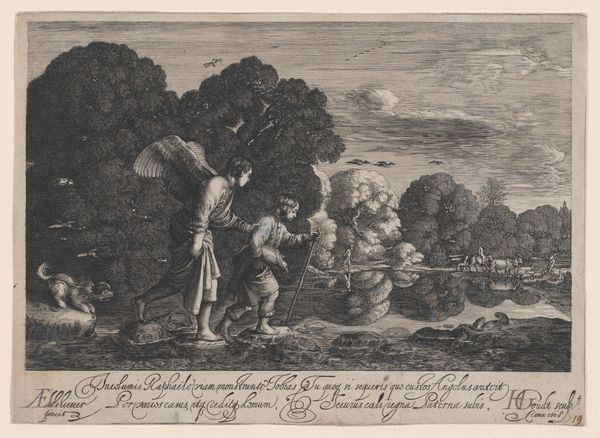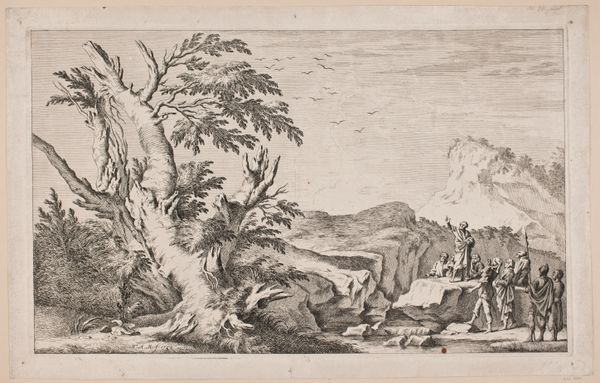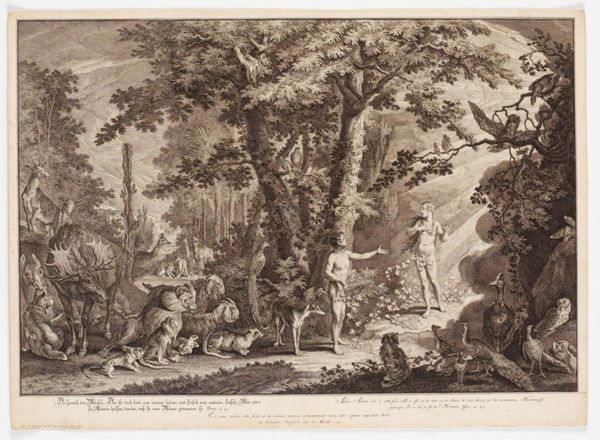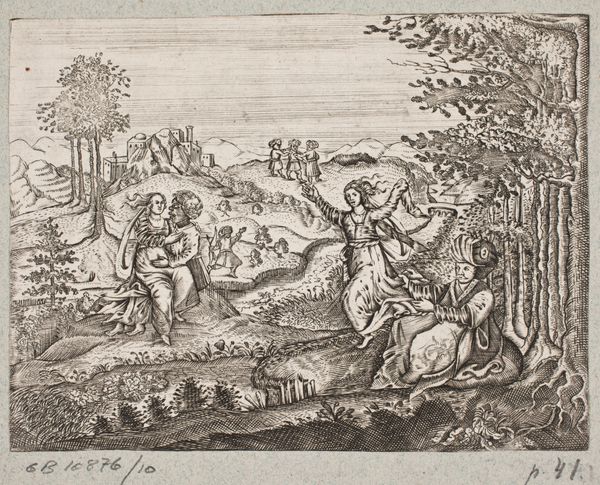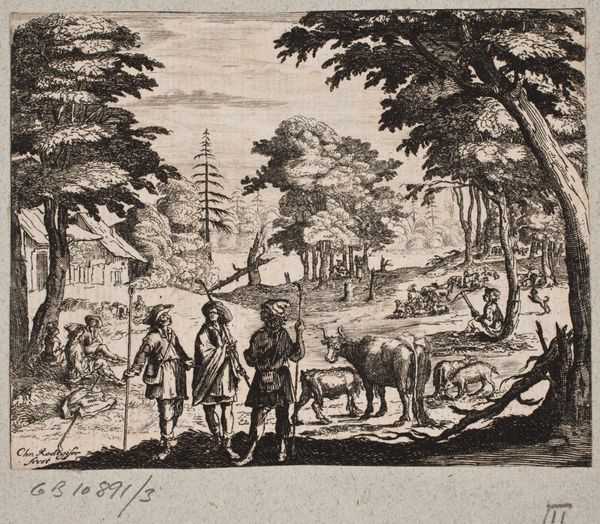![Illustration til Adam Olearius, “Persianischer Rosenthal von einem Sinnreichen Poeten Schich Saadi […]”, Schleswig 1660 by J. Muller](/_next/image?url=https%3A%2F%2Fd2w8kbdekdi1gv.cloudfront.net%2FeyJidWNrZXQiOiAiYXJ0ZXJhLWltYWdlcy1idWNrZXQiLCAia2V5IjogImFydHdvcmtzLzYzNTBlOTgzLTQ0OTctNDI0OS1hY2ExLWViZmYyZmNkODk0YS82MzUwZTk4My00NDk3LTQyNDktYWNhMS1lYmZmMmZjZDg5NGFfZnVsbC5qcGciLCAiZWRpdHMiOiB7InJlc2l6ZSI6IHsid2lkdGgiOiAxOTIwLCAiaGVpZ2h0IjogMTkyMCwgImZpdCI6ICJpbnNpZGUifX19&w=3840&q=75)
Illustration til Adam Olearius, “Persianischer Rosenthal von einem Sinnreichen Poeten Schich Saadi […]”, Schleswig 1660 1660
0:00
0:00
print, engraving
#
baroque
# print
#
landscape
#
engraving
Dimensions: 100 mm (height) x 135 mm (width) (bladmaal)
Editor: Here we have an engraving from 1660, "Illustration til Adam Olearius, ‘Persianischer Rosenthal von einem Sinnreichen Poeten Schich Saadi," attributed to J. Muller. The composition is really striking, all these little figures scattered around this almost fantastical landscape, and then this one group wrestling in the front. How do you interpret this work? Curator: It’s fascinating, isn’t it? Consider the symbols: a cage, birds escaping... Aren’t these often associated with liberation, or even loss of innocence? And notice the ship in the sky - a classical symbol for voyages or dreams. Could the wrestling figures represent conflicting desires or inner turmoil from the poet's own work? What's your first impression? Editor: Well, at first glance, it feels a little chaotic, almost violent, but then you notice this tension with the figures relaxing and chatting. It's this odd mix of relaxation and some underlying tension, like a calm before a storm. Curator: Exactly! It suggests that these seemingly separate elements - playfulness and strife, the earthly and the ethereal, freedom and restraint - are all intertwined. Even the Baroque landscape itself is not just scenery, but a reflection of inner states. Does seeing this shift your perspective? Editor: Absolutely. It’s not just an illustration. The symbols and even the layout, they seem to hint at larger ideas. I never would have thought about that. Curator: And that, my friend, is the joy of looking closer, seeing how artists imbue images with enduring meaning that speaks to us even centuries later.
Comments
No comments
Be the first to comment and join the conversation on the ultimate creative platform.
